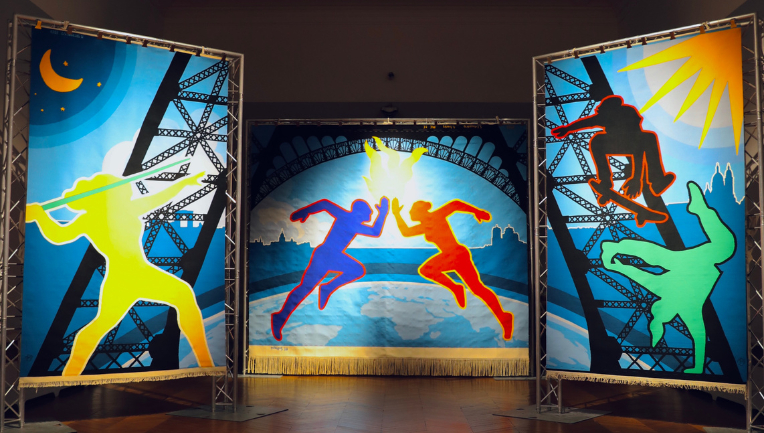 The Paris 2024 Olympics are up and running giving us daily opportunities to marvel at the skill and strength of world-class athletes.
The Paris 2024 Olympics are up and running giving us daily opportunities to marvel at the skill and strength of world-class athletes.
Alongside the diverse sporting events are a myriad of other activities including the Cultural Olympiad. One of the early elements of the Cultural Olympiad, unveiled in March 2024, is the Olympic Tapestry, a triptych tapestry, designed by Marjane Satrapi, and woven by weavers at the esteemed Mobilier National. The tapestry is currently displayed at the Hôtel de la Marine. It is 9 metres long and 3.3 metres high and took weavers at the Manufacture des Gobelins three years to complete.
Gillian Bull read an online article about it and found herself questioning the quality of the design, the extent to which the design utilised the skills of the weavers who created it and indeed the value of the tapestry itself. She writes:
"I’ve always thought that the first question a tapestry weaver should ask before commencing a new work is, "Why am I doing this as a tapestry (i.e. not a painting, print or poster)"?
Looking at this triptych, made at Manufacture de Gobelins, I suspect that Jean Lurçat must be spinning in his grave. Huge areas of garish monochrome - the weavers must have been bored to tears, not to mention feeling overlooked and de-skilled. And to think that the great series 'Lady with the Unicorn', can be viewed just across town, not to mention other wonderful tapestries ancient and modern displayed elsewhere in Paris.
I’ve never been all that keen on Lurçat’s designs, though his “ethic” of a restricted colour palette, the revival of the weavers’ input, etc. was admirable. But this is just nasty.
(I wonder where it’s going to end up.)"
Do you agree with Gillian? Does this tapestry design demonstrate the unique qualities of handwoven tapestry art? Is it a valid vehicle for the skills of the weavers who created it? Post your comments.



Add your comment